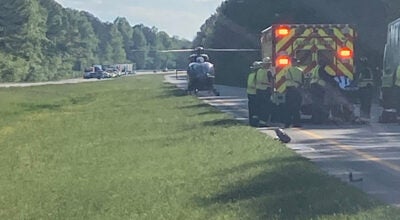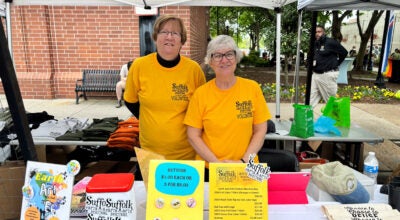HRTAC goes it alone
Published 9:40 pm Thursday, August 21, 2014
At its first retreat, the Hampton Roads Transportation Accountability Commission on Thursday decided to appoint its own executive director instead of sharing one with two other regional boards.
Options on the table were sharing a single executive director with the transportation planning organization and the planning district commission, or searching for someone to serve the accountability commission exclusively.
Following arguments from several of the commission’s 19 voting members that sharing an executive director would make more sense, Suffolk’s Chris Jones, one of five from the General Assembly, stepped in with what some clearly considered a threat:
“When we contemplated the bill, it was always a separate organization,” Jones said, referring to the legislature’s creation of an entity empowered to combine an expected $200 million in new annual revenue with bonds and tolls to solve congestion on the region’s roads.
“My guess is if we tried to have one (executive director), under one roof, there will probably be legislation that will require them to all be separate.”
Mayor McKinley Price of Newport News, who voted against a separate executive director with counterparts Mary Jones of James City County and Kenny Wright of Portsmouth, said that while the accountability commission was told it would be “responsible for what happened, now you are hearing something different.”
“Either it’s going to be the local people decide how to do this, or it’s going to be the legislature,” Price said. “I don’t think we should be under the threat that things are going to change. I just have concerns with your comments.”
Wright chimed in, “We can’t operate here under a threat from Richmond that if you do something they don’t like, they are going to go back and change it.” If Richmond’s intent for the organization was “to get 14 mayors to buy into what you want to do, I have a huge problem with that.”
He’s served as an elected official for 29 years, including a lengthy stint as mayor of Suffolk, Jones responded. “We created this organization. Like any piece of legislation, we can change it,” he said.
“You can take it as a threat. It’s a statement. We can change any bill any time we want to.”
Current Suffolk mayor, Linda Johnson, reminded members that the legislators among them also represent Hampton Roads citizens. “We have got to come together,” she said.
With the structure issue decided, said Sen. Frank Wagner, commission vice chair, a proposed budget can be presented at next month’s meeting.
Members also debated the process for selecting projects. Under the legislation, projects need be on the transportation planning organization’s Long-Range Transportation Plan, be supported by its resolutions, accord with HB 2313 — the landmark transportation funding bill of 2013 — or meet a $100-million “regional project cost threshold.”
Projects need to meet one or more of those criteria.
Portsmouth’s Delegate Johnny Joannou argued that the $100-million threshold prevents smaller localities, whose citizens still pay into the pot regardless, from getting their projects built.
“That’s not fair — they are not benefiting one bit out of it,” he said.
But using the dedicated funding for regionally significant projects releases other funding “that will allow us to do those very things in those small communities,” Johnson said.
“The understanding to me was we will get those projects done with other dollars that become available,” she said.
One high-profile project not on the list of candidate projects was also argued.
“I think it’s worthwhile taking another look at the Hampton Roads Bridge-Tunnel and seeing what can be done,” Mayor Jones of James City County said.
But the “data and facts” have consistently supported Patriot’s Crossing, Norfolk Mayor Paul Fraim said. That project includes a new bridge from Norfolk to the Monitor-Merrimac Memorial Bridge-Tunnel.
“This is a port-related project, but it does support the port, it does support the military, and one thing it does do is reduce congestion at the Hampton Roads Bridge-Tunnel,” he said.
Suffolk City Council members Charles Brown and Charles Parr sat in the audience. Parr spoke during the public comments period, thanking the state legislators for creating the commission, because “we couldn’t work together as a region down here and get something done to alleviate traffic.”
He said he hopes “both sides of this table” can work together for the benefit of the region, adding, “I’m looking forward to getting some traffic congestion relieved and creating a truly regional economic development engine that will be No. 1 in the nation.”






